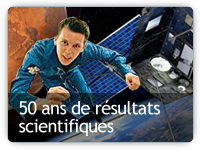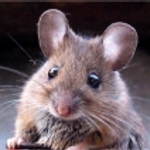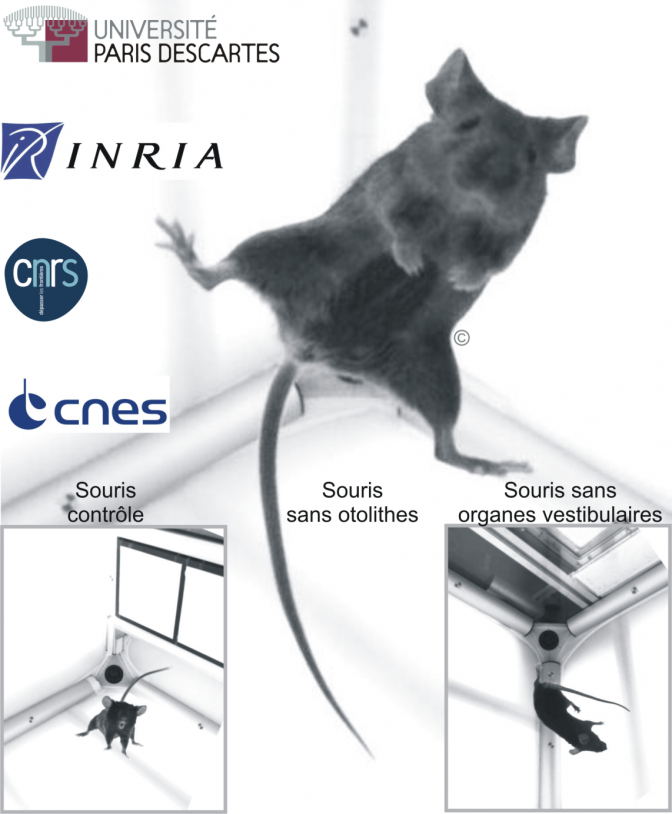

In order to understand how the vestibular organs of the inner ear participate to the posture regulation and the spatial orientation, mice were filmed thanks to several synchronized high frequency cameras during two parabolic flight campaigns (CNES nº82 and 84). The VesPara experiments were previously green-lighted by the regional ethics research committee (nºP2.MB.127.10).
Along with the normal mice (control group), two strains of mice carrying genetic deficiencies were studied.
The first one had a selective otolith (vestibular sensors which are sensible to gravity) deficit, the second one did not have any vestibular sensor.
Mice in microgravity
After the first walking, swimming and falling tests on the ground, the different mice were loaded in a A300 Zero-G aircraft to perform parabolic flights. This aeronautic manoeuvre is the only way, without going to space, to experimentally "eliminate" gravity.
During parabolas, the whole aircraft is deprived of gravity. The three dimensional postural and locomotor behaviors of the different mice were filmed and then recreated on computer to quantify and compare them.

When in weightlessness conditions, the wild-type mice were very active and try to maintain their heads and bodies aligned in a plane parallel to the observation cage floor, their only point of spatial reference.
The mice lacking otolith organs were, on the contrary, incapable of maintaining their attitude relative this reference plane. They let themselves drift passively and adopted stereotyped postures.
At last, mutated mice lacking inner ear lost all their capacity to maintain a coherent posture and all their points of orientation when floating.
Those observations allowed scientists to approach the role of each vestibular sensor combined with the ground bearings concerning the postural control. Those observations assess that the vestibular system is necessary for both the skeletal geometry control (egocentric reference) and the setting of this geometry in relation to the environment (allocentric reference).
In order to quantify the complex movements of the mice during the flights and during the in lab experiments, an innovative technique is currently under development: the three dimensional posturography. This technique will allow real-time monitoring of the skeleton and soft-flesh movements of a mouse which would be free of its movements.
In the future, this technique will allow a more precise evaluation of the psychomotor behaviors of mice which are used in the neurological disease study and it will participate to the evaluation of the new therapeutics for these diseases.
Contacts
- Scientific conctacts: Mathieu Beraneck and Pierre-Paul Vidal, CESEM Centre d’Etude de la Sensori Motricité, combined CNRS-Université Paris Descartes-Sorbonne laboratory, Lionel Reveret, INRIA Rhônes-Alpes, France
- Life sciences program scientist: Guillemette Gauquelin-Koch
See also
Websites of the scientists implicated in those research: